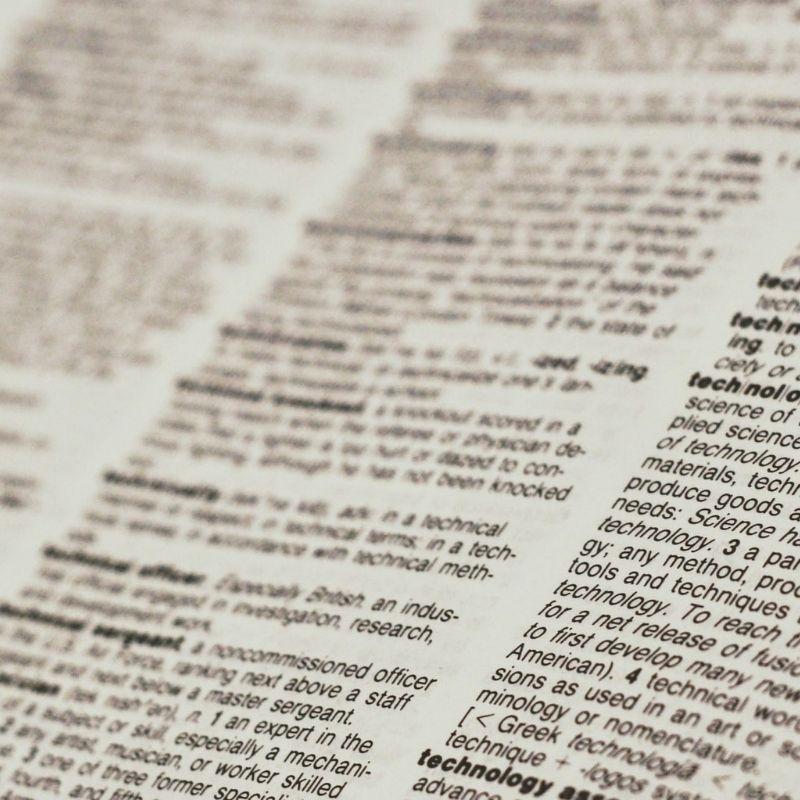Of course, a month or even a year is not enough to master a language. Learning the basics at a level that enables simple communication is a completely different matter, though! The effects should be felt after the first lessons. With them will come satisfaction and motivation for further learning. But what is the best way to go? A traditional Spanish course or maybe e-learning?
How to start learning Spanish
Going on holiday to Mallorca? Or maybe you are planning a student exchange in Don Quixote’s homeland? No matter what your motivation to learn is, the goal of education is crucial. It gives you the strength to continue should the desire to give up ever appear. The motivation doesn’t necessarily have to be as remote as the Iberian Peninsula. It is enough if you want to watch “La casa del papel” on Netflix in the original. What is important is that this goal is specific and achievable. Setting your goals properly will help you to set off on your adventure with learning Spanish.
Once you find the right direction, reach for the tools that will help you to be systematic. It’s always worth not biting off more than you can chew. As the beginnings of learning Spanish can be difficult, be sure to divide up the things that you are trying to learn into manageable portions. Regularity in the revision of material is also extremely important. It is enough to spend even a few minutes a day to consolidate freshly acquired knowledge so that the words have a better chance of being remembered for longer.
Appropriate tools, such as language applications with Spanish courses helpful regularity. SuperMemo is a good example. The system analyses your progress and sets repetition intervals to your individual predispositions, which optimizes the remembering process.
If you want to learn Spanish quickly, keep these things in mind at the beginning:
- specific learning purpose
- appropriate portioning of knowledge and regularity,
- proper selection of tools.
Good choices in the above matters will have an impact on a very important element, which, according to the interpretation of one of the founders of SuperMemo – Dr. Piotr Woźniak, is an integral part of the learning process, namely, the pleasure of learning. A well-structured Spanish course should be satisfactory, both because of the form and the effects it brings. It is worth keeping that in mind!
Spanish course – at home or in-class?
Anyone who asks themselves how to learn Spanish faces the choice of an in-class course or study at home. There is no correct answer to this. However, let’s take a closer look at the pros and cons of both solutions.
In-class courses
When beginning to learn Spanish, an experienced teacher will be a great support. By participating in language school activities, you can always easily get the answers to your questions. The teacher also corrects your mistakes in pronunciation on a regular basis.
However, you need to remember that such an option is not the cheapest one. A one hour lesson in a larger city may cost around USD 20 – this is the price for group classes. So you must also take into account that a tutor will not be able to devote one hundred percent of his or her time to you. Group classes usually also generate more stress for the student than private sessions. Fear of making mistakes in the presence of other participants can be paralysing, which is not good for the learning progress. Even if you eliminate this factor by choosing a one-to-one Spanish course, you still have to take into account, for example, the time spent commuting. Therefore, in addition to the level of education, it is also worth considering the location of the school. Also, it is often problematic to adapt to the lesson schedule. If you want flexibility, an in-class course may not be the best idea.
Study at home
When deciding on self-education, the lack of regularity often stands in the way of satisfactory progress. When you are not obliged to appear in class and prepare for it, it is easier to be tempted to postpone learning. If you want to learn Spanish at home, it will require a lot of self-discipline and good organization.
The undoubted advantage of self-study is the ability to choose an individual pace. You don’t have to adapt to other people in the group. You can go in your own rhythm. What’s more, a Spanish course at home also eliminates a lot of the stress related to confronting your skills with the assessments of other course participants. E-learning is also associated with lower expenses. A monthly subscription to SuperMemo costs only 9.90 USD, and gives access to over 200 high-quality courses for learning many languages at various levels. The time you don’t waste on commuting should also be counted as an advantage of learning Spanish at home.
Both ways to master a language have their pros and cons. That’s why it’s not worth focusing on one. Just learning with a teacher or through tandem language exchange is not enough to quickly master Spanish. After school, you always have to put at least a little individual effort into the repetition and consolidation of the material. Therefore, the combination of an in-class course with specialized e-learning tools seems to be the optimal method for learning Spanish.
5 rules helpful in learning Spanish
How can you get quick results in language learning? Remember to stick to a few simple rules.
1. Regular revision
Systematic refreshment of new material is the foundation of the SuperMemo method, in which the algorithm determines when you repeat it. Daily learning usually brings the best results. Undoubtedly, it is worth being patient and determined, and the effects will definitely come. Remember that by delaying revision, you create a backlog of material, which generates stress and increases the risk that you will simply forget more, and thus your progress will be slower.
2. Material selection
You can’t learn everything right away. The most important thing, especially at the beginning of learning Spanish, is to learn the basics and to solidify them. Later you can move on to more detailed elements. To ask about a train in Madrid, or do shopping at a market in Argentina, about 500 words should be enough. Start with them and don’t move on until you learn them well. Jumping levels is one of the most common mistakes in learning, and shortcuts rarely help you reach your goal.
3. Moderation – never bite off more than you can chew
At the beginning of learning Spanish, everything will be new to you. It’s important to understand the material and only then start to repeat it. Sure, you could try to learn the entire dictionary by heart, but firstly it would be a very tedious process, and secondly, learning vocabulary without context is a merely technical exercise, and so the words fade from memory much faster. Therefore, the technique of small but sure steps will work better. If you use the SuperMemo method in learning Spanish, at the beginning we recommend using 30 cards, and as you progress, you can increase the dose of material you learn.
4. Don’t complicate your learning
Simplicity in learning Spanish is inseparably connected with the other principles. It is worth grouping words into sets, embedding them in context. Are you going to go shopping? Make a list in Spanish! Try to incorporate the language into simple everyday activities so that learning gets into your blood. Learn simple nursery rhymes. Have fun with the language!
Gap-fill exercises are another good and uncomplicated solution for learning words. They are based on short sentences in which you have to fill in missing words. Embedded in context, the words will thus be easier to remember.
Mastering the basics is the foundation for further progress, so you should approach this stage of learning carefully. However, simplicity should also be borne in mind in the later stages of your adventure with Spanish.
5. Concentration
It doesn’t matter if you are studying Spanish or biology, make sure you have the right level of concentration. Regardless of the individual rhythm of the day, it has been proven that in the morning, when the brain has had a dose of restorative sleep and your learning is accompanied by daylight, it is easier to focus. However, some people find it difficult to make time for learning in the morning, especially if it meant they would have to get up at dawn. There’s nothing to prevent you from finding time in the afternoon or evening, though. Always remember about good organization. While learning, ask yourself questions that will help you improve your learning practices:
- Is the material that I am acquiring essential to achieve my goal?
- Is the issue formulated in the simplest possible way, or can I approach it differently?
Remember that slapdash work, doing several things at once with no revision, will give you poor results. This way you will definitely not learn Spanish quickly, which will eventually lead to frustration.
How can you learn Spanish? Do it with your head!
If you want to achieve results in your learning, it is important to provide your body with the proper amount of sleep. It is true that some outstanding people, such as Leonardo Da Vinci, Napoleon or Nikola Tesla did not bother sleeping, resting for only 3-4 hours a day. However, not everyone is a Napoleon, and the recommended amount of sleep that allows proper regeneration is 7-8 hours. Sleeping is a very important element in improving concentration and increasing your learning effectiveness!
When you learn Spanish, you are training your brain, but don’t forget about the rest of your body. Physical activity strengthens the connections between neurons and slows down the ageing of the brain. Therefore, exercises should be included in your daily routine.
Instead of exercising, many people choose a simpler and faster method to stimulate learning. One of the most popular is caffeine. A cup of coffee helps you start in the morning and stimulates your body to become more active faster, and there is nothing wrong with that. However, remember not to overdo it. Large amounts of caffeine can lead to anxiety, concentration problems and sleep disorders.
Don’t forget that you are learning for yourself
When you approach learning Spanish, remember that the beginnings can be difficult. You have completely new knowledge to acquire, which requires a lot of repetition. So after the first wave of enthusiasm, doubts may appear. Then you have to remember the goal that inspired you to start. If it seems distant, look for tasks that are easier to accomplish along the way. Achieving minor goals will trigger the sensation of pleasure in your brain, and as you already know, satisfaction is an integral part of a well-structured knowledge acquisition process.



